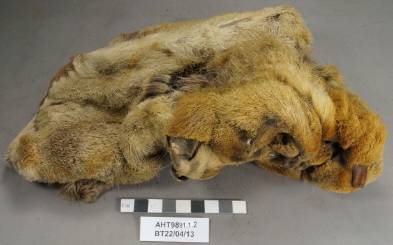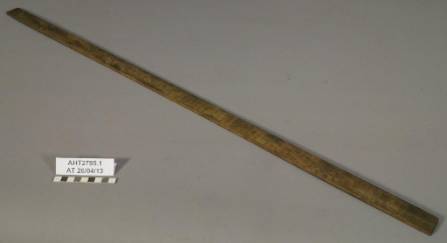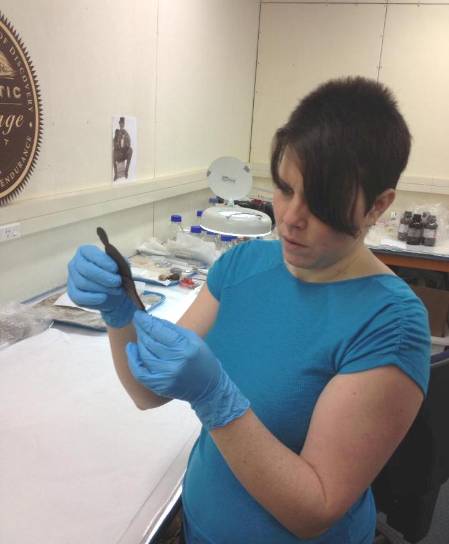Author: Stefanie
Date: 15/05/2013
Temperature: -31 degrees celcius
Wind Speed: 350/1 kts
Temperature with wind chill: -39 degrees celcius
Sunrise: n/a
Sunset: n/a
Sometimes we encounter the most unexpected surprises during a conservation treatment and expose a piece of history that is really quite special. Recently, two dry, stiff and distorted pieces of Reindeer fur that were labelled "mitten" and "fragment" arrived in the lab as two separate objects.
Before Treatment of fragment
Before Treatment of Mitten
The treatment of the objects involved the slow humidification of the fur and the even slower and more cautious reshaping of each object until their original shape was revealed. It slowly became apparent that first impressions (as well as labels) were misleading and the objects were neither a mitten nor a fragment, but a complete pair of fur boots. The matching fur boots present a fine example of Finnesko (a thermal boot made of tanned reindeer skin with the outside fur).
After Treatment of Finnesko
Inside the boots sennegrass was also revealed. Sennegrass, a sedge (carex vesicaria) from Northern Europe, was used to insulate boots by carefully arranging the grass around ones feet and toes. By the time Scott and his men set about their expedition, the use of sennegrass to insulate footwear was already a long standing tradition. Norwegian explorer Carsten Borchgrevink tells us:
"if you get wet feet while wearing the grass in the 'komager" (Finnesko) you will be warmer than ever, as the fresh grass will, by the moisture and the heat of your feet, in a way start to burn or produce its own heat by spontaneous combustion. The great thing seems to be to arrange the grass properly in the boots..."
And so with what first appeared to be a fur mitten and fragment we discovered a very fine example of a pair of Finnesko with sennegrass contents.






.jpg)
.jpg)



